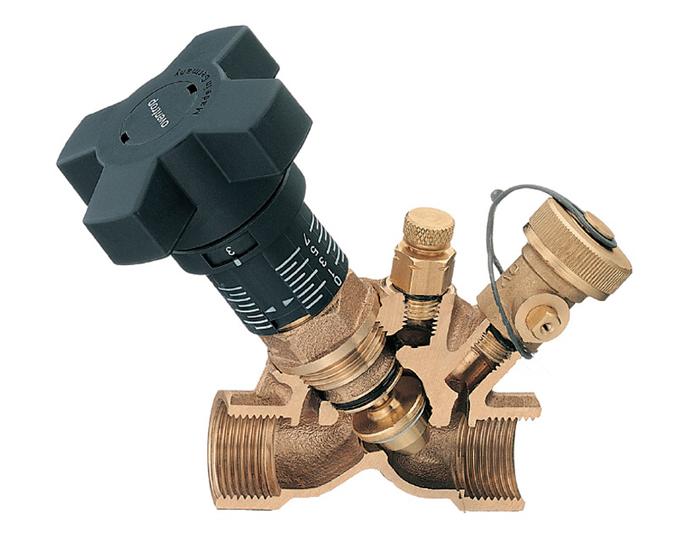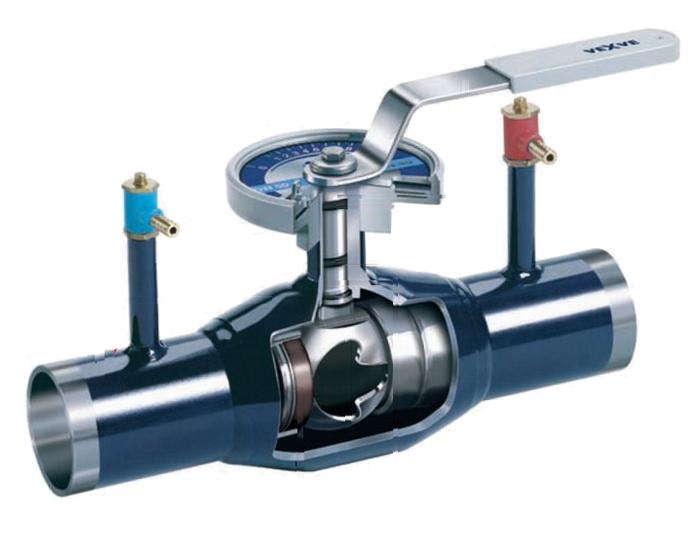Please do not block ads on our site. Clicks on ads help us exist, grow and become more useful for you!
Design of balancing valve
Manual balancing valves are manufactured based on a globe valve or ball valve. Compared to shut-off valves, regulating valves operate in more severe conditions with possible cavitation, high pressure drops, and working fluid velocities. The design of balancing valves is more reliable than the design of shut-off valves and is adapted for regulation.
For convenient regulation, balancing valves can have the following features:
- A fixing device for the set position
- An indicator of the disc position and the value of the adjustment
- A drain connector for the area where the valve is installed
- A measuring diaphragm for accurate flow rate determination
- Connectors for measuring flow rate, pressure, and pressure drop on the valve
- The ability to perform shut-off function while preserving the adjustment value
Globe balancing valves have a seat disc as a regulating element. The balancing valve consists of a body with a fixed threaded nut, a disc hinged on a threaded stem, and an adjustment handle.
Globe balancing valves are distinguished by their smooth adjustment, high accuracy of regulation, and virtually ideal flow characteristics. The complex shape of the flow section does not allow for their use with viscous working fluids.
The body of balancing valves is made of cast iron, steel, brass, or bronze with a flanged or socket connection to the pipeline.
The stem sealing of the balancing valve can be implemented with a bellows, a diaphragm, or a gland. Balancing valves with gland sealing differ in the ability to choose the gland material depending on the working fluid parameters.
The disc and seat determine the flow characteristics of the balancing valve and can have a flat, conical, cylindrical, or radial shape.
The stem of the balancing valve can be rising or non-rising, inclined or straight. The presence of a rising spindle for installation in a limited space can be a decisive factor when choosing a valve. Balancing valves with an inclined stem differ in less hydraulic resistance compared to valves with a straight stem.
Ball balancing valve - the regulating element is a ball valve, the shape of the passage section of which determines the flow characteristic. The ball balancing valve consists of a body and a ball valve mounted on an axis perpendicular to the pipeline axis. The valve has a graduated disk for determining the adjustment position.
The body of the balancing valve is made of brass, bronze, or steel with threaded, flanged, or welded connections to the pipeline. The ball is made of high-quality alloy steel, resistant to abrasive wear.
The main advantage of ball balancing valves is the simple shape of the flow part, suitable for use with viscous media. The disadvantages include low adjustment accuracy and the complexity of creating a linear or logarithmic flow characteristic.
question : comment : feedback
288
 Catalog of
Catalog of balancing valves
Herz
Herz
Herz
Herz
Herz
Herz
Herz
Herz
Zetkama
Zetkama
Danfoss
Danfoss
Danfoss
Danfoss
Danfoss
Honeywell - Resideo
Honeywell - Resideo
Honeywell - Resideo
Honeywell - Resideo
Oventrop
Oventrop
Oventrop
IMI Hydronic
IMI Hydronic
IMI Hydronic
IMI Hydronic
IMI Hydronic
IMI Hydronic
ARI Armaturen
ARI Armaturen
Vexve
Vexve
VIR
VIR
VIR
Frese
Danfoss
Danfoss
IMI Hydronic
IMI Hydronic
IMI Hydronic
IMI Hydronic
Zetkama
Zetkama
VIR
Comap
Comap
Comap
Herz
Vexve
Vexve
Broen
Broen
Broen
Broen
Broen
Broen










 Tutorial Herz
Tutorial Herz
